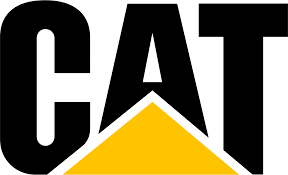How to solve the problem that the 3126B diesel engine used in Caterpillar excavators cannot start Cause of failure
12.2021 Caterpillar ECM ECU Flash Files Full Set Download
(1) The battery is out of power.
(2) The battery cable is not firmly connected.
(3) There are certain fault codes or event fault codes that prevent the diesel engine from starting.
(4) There is no power supply to the ECM.
(5) The engine oil level is too low.
(6) The starting circuit or starter solenoid coil is faulty.
(7) The starter is damaged.
2023 CAT ET 2023A 2023C & 2019C Full Service Download and Installation Service
(8) The flywheel ring gear is excessively worn.
(9) The intake air heater of the starting auxiliary device is faulty.
(10) The diesel engine parking switch is in the ON position.
(11) The speed/timing sensor is faulty, incorrectly installed and needs calibration.
(12) The fuel injection drive pressure is abnormal.
(13) The fuel injector does not work.
(14) There is a fault in the fuel supply system.
(15) Combustion failure.
(16) The internal parts of the diesel engine are bent or stuck.
Caterpillar CAT Factory Password Calculator Generator 10 Digits VM Version
2. Check diesel engine speed/timing
(1), crank the diesel engine and observe the diesel engine speed on the ET screen. If ET shows 0 r/mim,
then check the speed/timing sensor. Note: When cranking for the first time, the diesel engine speed
signal may be abnormal. Once the ECM can calculate the diesel engine speed from the signal, this
information is replaced with the diesel engine speed.
(2) Check the diesel engine speed/timing sensor calibration.
(3) Confirm that the timing reference gear is installed correctly. If the gear is installed backwards, the
diesel engine will not start. Check for correct positioning between crankshaft and camshaft drive gear.
If necessary, correct positioning and/or replace drive gear.
3. Check the injection drive pressure
(1) Check the engine oil level.
(2) If the diesel engine has been repaired recently, there may be air in the injection drive pressure
circuit. Allow the diesel engine to warm up completely and operate the engine under load to bleed the
air from the injection drive pressure circuit.
(3) Compare the actual driving pressure on the ET with the required driving pressure. If the difference
between the two readings during the fault does not exceed 2MPa, it means that the problem does not lie
in the injection driving pressure circuit. (3).
(4) Check the sealing condition of the injection drive pressure control valve. If there is a seal failure
then replace the seal and repeat the steps
(5) Check whether the wiring harness connected to the injection drive pressure control valve is open
and/or short-circuited.
(6) Measure the coil resistance of the injection drive pressure control valve, it should be 4~162,
otherwise, replace the injection drive pressure control valve. Can leak.
4. Check the fuel system
(1) Visually check the fuel level, do not rely solely on the fuel gauge. Add fuel if necessary. If a diesel
engine runs out of fuel, the air must be bled from the fuel system.
(2) Check the fuel pipe for problems such as throttling, collapse, and pinched pipes. If the fuel line is
faulty, repair or replace it.
(3) Check whether there are any foreign objects in the fuel tank. Foreign objects will hinder the fuel
supply.
(4) After replacing the fuel filter, repairing the low-pressure fuel supply circuit, or replacing the
injector, check whether there is air in the low-pressure fuel supply system. You can use the observation
window in the low-pressure fuel supply line to determine whether there is air in the fuel. Note: Do not
crank the diesel engine continuously for more than 30 seconds. Before cranking the diesel engine again,
let the starter cool down for 2 minutes.
(5) Bleed the air from the low-pressure fuel supply circuit.
(6) Check the fuel quality. If the temperature is below 0°C, check for solidified fuel (wax).
(7) When cranking the diesel engine, check the fuel pressure behind the fuel filter. If the fuel pressure
is low, replace the fuel filter. If the fuel pressure is still low, check the fuel transfer pump, fuel transfer
pump coupling and fuel pressure regulator valve.
5.Other inspections
(1) There are certain fault codes and/or event fault codes that will prevent the diesel engine from
starting. Connect the ET and check for current fault codes and/or historical fault codes. Before
continuing with this procedure, troubleshoot and troubleshoot existing fault codes. Note: If the ET
cannot communicate with the ECM, the problem most likely lies in the power supply to the ECM.
Please refer to Section 11.5 of this chapter.
(2) Check the engine oil level. Add engine oil if necessary. 421
(3) Confirm that the air intake heater has reached the on position.
(4) The diesel engine parking switch should be in the OFF position. Use ET to check the status of the
diesel engine parking switch. When parking, the ignition key switch should be turned to the OFF
position for at least 15 minutes before the diesel engine can be started again.


